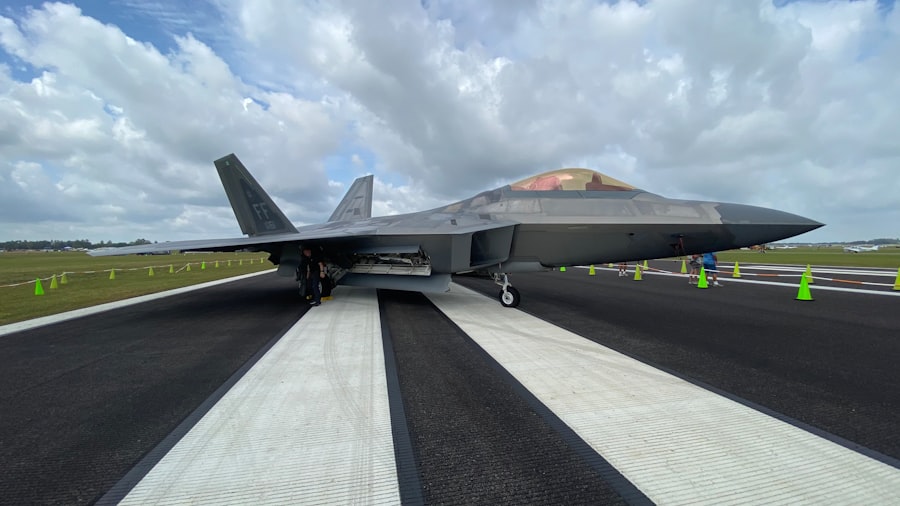In recent years, defense budget cuts have emerged as a significant concern for military strategists and policymakers alike. As nations grapple with economic challenges, the allocation of funds for defense has often been scrutinized and reduced. These cuts can have far-reaching implications, affecting not only the operational capabilities of armed forces but also the technological advancements that are crucial for maintaining a competitive edge.
The complexities surrounding defense budgets are multifaceted, involving considerations of national security, international relations, and domestic priorities. The ramifications of these budgetary constraints extend beyond mere numbers on a balance sheet. They influence the very fabric of military readiness and innovation.
As countries strive to balance fiscal responsibility with the need for robust defense capabilities, the question arises: how can military forces adapt to these financial limitations while still ensuring they remain effective in an increasingly complex global landscape? This article delves into the various dimensions of defense budget cuts, particularly focusing on their impact on military technology and the broader implications for national security.
Key Takeaways
- Defense budget cuts have significant implications for military technology and national security.
- Research and development in military technology is at risk due to budget cuts, impacting innovation and modernization.
- Acquisition of new technology is hindered by budget constraints, affecting the military’s ability to stay ahead in modern warfare.
- Maintaining cybersecurity capabilities becomes a challenge with limited resources, posing a risk to national security.
- Despite the challenges, defense budget cuts present opportunities for innovation and efficiency in military technology.
Overview of Military Technology
Military technology encompasses a wide array of tools, systems, and innovations designed to enhance the effectiveness of armed forces.
The integration of cutting-edge technologies has transformed traditional warfare, enabling forces to operate with greater precision and efficiency.
As nations invest in research and development, they seek to harness these advancements to bolster their defense strategies. The rapid pace of technological advancement presents both opportunities and challenges for military organizations. On one hand, innovations such as drones, autonomous vehicles, and sophisticated communication systems have revolutionized how militaries conduct operations.
On the other hand, the increasing complexity of these technologies necessitates substantial investment in training and infrastructure. As defense budgets face cuts, the ability to keep pace with technological advancements becomes a pressing concern, raising questions about how military forces can maintain their operational effectiveness in an era of constrained resources.
Impact of Defense Budget Cuts on Research and Development

One of the most significant consequences of defense budget cuts is their impact on research and development (R&D) within the military sector. R&D is essential for fostering innovation and ensuring that armed forces can adapt to emerging threats. However, when budgets are slashed, funding for R&D initiatives often takes a hit.
This reduction can stifle creativity and hinder the development of new technologies that could enhance military capabilities. As funding diminishes, research programs may be scaled back or even canceled altogether. This not only affects current projects but also has long-term implications for the military’s ability to innovate.
A lack of investment in R&D can lead to a stagnation in technological advancement, leaving armed forces vulnerable to adversaries who may be investing heavily in their own research initiatives. The challenge lies in finding a balance between immediate budgetary constraints and the long-term necessity of maintaining a robust pipeline of technological innovation.
Effects of Budget Cuts on Acquisition of New Technology
| Metrics | Impact |
|---|---|
| Number of new technology acquisitions | Decreased |
| Quality of new technology acquired | Reduced |
| Implementation time for new technology | Increased |
| Employee productivity | Impacted negatively |
The acquisition of new technology is another area significantly impacted by defense budget cuts. When budgets are reduced, procurement processes often become more stringent, leading to delays in acquiring essential systems and equipment. This can result in outdated technology remaining in service longer than anticipated, which can compromise operational effectiveness and readiness.
Moreover, budget cuts can lead to a prioritization of short-term needs over long-term strategic goals. As military leaders are forced to make difficult decisions about which programs to fund, critical projects may be sidelined in favor of more immediate concerns. This reactive approach can hinder the military’s ability to anticipate future challenges and invest in technologies that could provide a strategic advantage.
The consequences of such decisions can reverberate throughout the military, affecting everything from troop morale to overall mission success.
Implications for Modernization of Equipment and Vehicles
Modernization is a crucial aspect of maintaining a capable military force. However, defense budget cuts can severely impede efforts to upgrade equipment and vehicles. Aging fleets and outdated systems can pose significant risks during operations, as they may lack the necessary capabilities to counter modern threats effectively.
The inability to modernize can leave armed forces at a disadvantage against adversaries who are investing in advanced technologies. Furthermore, the modernization process often requires substantial upfront investment, which can be difficult to justify in times of budgetary constraints. As a result, military leaders may be forced to prioritize maintenance over modernization, leading to a cycle of decline where outdated equipment becomes increasingly difficult to operate and maintain.
This situation not only affects operational readiness but also has implications for recruitment and retention, as service members may be less inclined to serve in an organization that lacks modern tools and resources.
Challenges in Maintaining Cybersecurity Capabilities

In an era where cyber threats are becoming increasingly sophisticated, maintaining robust cybersecurity capabilities is paramount for national defense. However, defense budget cuts can undermine efforts to bolster cybersecurity infrastructure and personnel training. As cyber warfare becomes a central component of modern conflict, the need for investment in cybersecurity technologies and expertise has never been greater.
When budgets are constrained, cybersecurity initiatives may be deprioritized in favor of more traditional defense spending. This can leave critical vulnerabilities unaddressed, exposing military networks and systems to potential breaches. Additionally, the rapid evolution of cyber threats necessitates continuous investment in training and development for personnel tasked with defending against these attacks.
Consequences for Training and Education in Military Technology
Training and education are vital components of ensuring that military personnel are equipped to utilize advanced technologies effectively. However, defense budget cuts can lead to reductions in training programs and educational opportunities for service members. This can create a skills gap where personnel lack the necessary expertise to operate new systems or adapt to emerging technologies.
Moreover, as technological advancements continue to reshape the battlefield, ongoing education becomes essential for maintaining operational effectiveness. When budgets are tight, training programs may be scaled back or eliminated altogether, leaving service members ill-prepared for the challenges they may face in combat situations. The consequences of inadequate training can be dire, potentially leading to increased risks during operations and diminished overall effectiveness.
Potential Risks to National Security
The cumulative effects of defense budget cuts pose significant risks to national security. As military capabilities become constrained by financial limitations, adversaries may perceive opportunities to exploit vulnerabilities. A weakened military posture can embolden potential aggressors, leading to increased tensions and instability in various regions around the world.
Furthermore, reduced investment in technology and modernization can hinder the military’s ability to respond effectively to emerging threats. In an era characterized by rapid technological change and evolving geopolitical dynamics, maintaining a strong defense posture is essential for deterring aggression and safeguarding national interests. The potential risks associated with budget cuts underscore the importance of finding a balance between fiscal responsibility and ensuring that armed forces remain capable of addressing contemporary security challenges.
Opportunities for Innovation and Efficiency in Military Technology
Despite the challenges posed by defense budget cuts, there are also opportunities for innovation and efficiency within military technology. In times of financial constraint, organizations are often compelled to think creatively about how to maximize resources and streamline operations. This can lead to the development of more efficient processes and systems that enhance overall effectiveness.
Moreover, collaboration with private industry and academic institutions can foster innovation by leveraging external expertise and resources. By forming partnerships with technology companies and research organizations, military forces can access cutting-edge developments without bearing the full burden of R&D costs. Such collaborations can lead to breakthroughs that enhance operational capabilities while also promoting cost savings.
International Competitiveness and Defense Budget Cuts
In an increasingly interconnected world, international competitiveness is closely tied to defense capabilities. As nations face budgetary constraints, the ability to maintain a competitive edge becomes paramount. Countries that invest wisely in military technology are better positioned to influence global affairs and deter potential adversaries.
However, defense budget cuts can create disparities between nations regarding technological advancements. While some countries may continue to invest heavily in their militaries despite economic challenges, others may struggle to keep pace due to financial limitations. This uneven playing field can have significant implications for global security dynamics, as nations with superior technology may gain strategic advantages over those that cannot afford similar investments.
Balancing Budget Constraints with Military Technological Advancements
In conclusion, defense budget cuts present a complex challenge for military organizations striving to maintain operational effectiveness while navigating financial constraints. The impact on research and development, acquisition processes, modernization efforts, cybersecurity capabilities, training programs, and overall national security cannot be overstated. As nations grapple with these issues, it becomes increasingly important to find a balance between fiscal responsibility and the need for robust military capabilities.
While budget cuts pose significant risks, they also present opportunities for innovation and efficiency within military technology. By fostering collaboration with external partners and embracing creative solutions, armed forces can continue to advance their capabilities even in challenging economic environments. Ultimately, striking this balance will be crucial for ensuring that military organizations remain prepared to address contemporary security challenges while safeguarding national interests in an ever-evolving global landscape.
In recent years, discussions around military technology budget cuts have intensified, with many experts weighing in on the potential impacts on national security and technological advancement. A related article that delves into the intricacies of these budgetary decisions can be found on the website “In The War Room.” This article provides a comprehensive analysis of how budget cuts could affect various military programs and the broader implications for defense strategies. For more detailed insights, you can read the full article by visiting In The War Room.
FAQs
What are military technology budget cuts?
Military technology budget cuts refer to reductions in the amount of funding allocated to the development, procurement, and maintenance of advanced military equipment and technology.
Why are military technology budget cuts implemented?
Military technology budget cuts are often implemented as a result of changes in national defense priorities, budget constraints, or shifts in geopolitical dynamics. Governments may also seek to reallocate funds to other areas of defense or domestic spending.
What impact do military technology budget cuts have on the armed forces?
Military technology budget cuts can impact the armed forces by limiting their ability to modernize and maintain a technological edge over potential adversaries. This can affect readiness, operational capabilities, and overall military effectiveness.
How do military technology budget cuts affect defense contractors and the defense industry?
Military technology budget cuts can lead to reduced demand for defense equipment and technology, which can impact defense contractors and the defense industry. This may result in layoffs, reduced research and development, and a slowdown in innovation.
Are there any potential risks associated with military technology budget cuts?
Potential risks associated with military technology budget cuts include a loss of technological superiority, decreased military readiness, and an inability to effectively respond to emerging threats. Additionally, budget cuts may lead to delays in the development and procurement of critical military capabilities.




